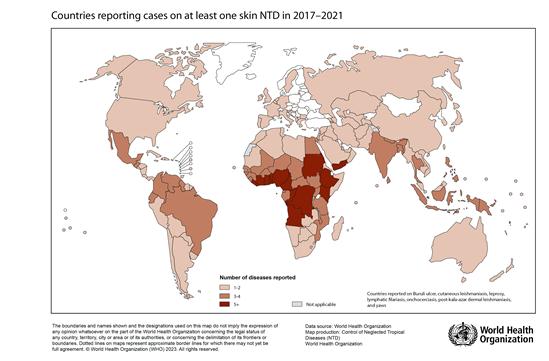A lab technician looking for AFB from a swab from a Buruli ulcer lesion
Promoting research on Buruli ulcer
Buruli ulcer research is progressively grown since 1998 with better understanding of the epidemiology, pathogenesis, diagnosis and treatment. WHO through its global meetings identify the key research priorities in order guide the research agenda. The current priorities are:
1. Mode of transmission
This has been the most challenging area for researchers. Despite extensive research over the past decade, the mode of transmission remains unknown. The recent increase in the number of cases in Australia has highlighted the urgency to understand the mode of transmission so that preventive measures can be taken.
2. Development of rapid diagnostic tests
In March 2018, WHO and the Foundation for Innovative New Diagnostics (FIND) organized a meeting to assess progress in the development of rapid diagnostic test for Buruli ulcer. The meeting agreed on further work to target mycolactone as a diagnostic test, including improvements to the fluorescent thin-layer chromatography technique, currently being piloted in selected countries. Other methods such as LAMP are also being evaluated.3. Antibiotic treatment
In addition to the current treatment using rifampicin and clarithromycin for 8 weeks, further research is needed to determine whether the duration of treatment can be reduced. New medicines with the potential of reducing the duration of should be evaluated to guide any future decisions on treatment. At the last WHO Buruli ulcer and skin NTDs meeting in 2019 (Geneva, Switzerland), interesting in-vitro data were presented on Q203, rifampicin and Q203, and triple oral with beta-lactams.





